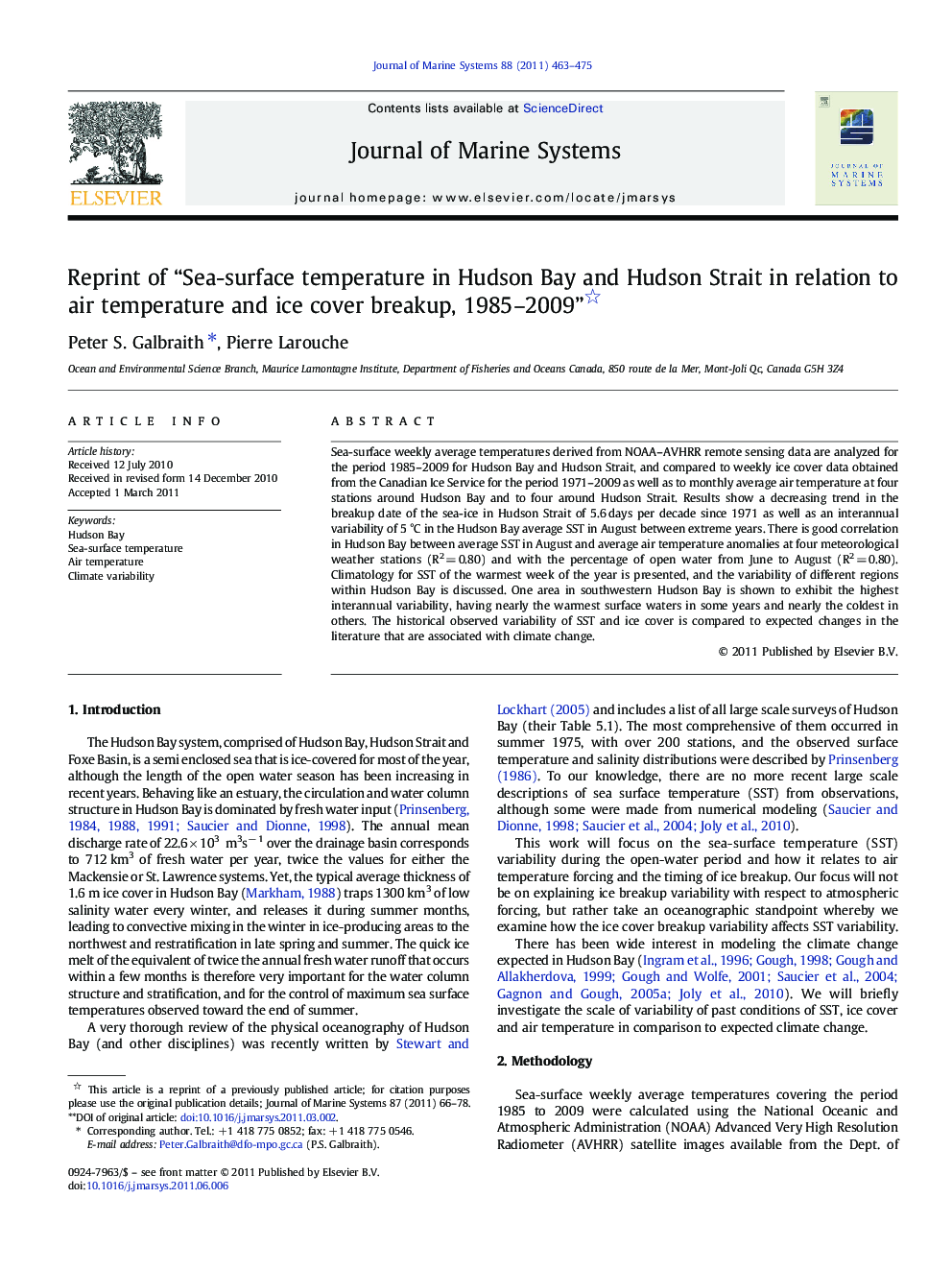| Article ID | Journal | Published Year | Pages | File Type |
|---|---|---|---|---|
| 4548351 | Journal of Marine Systems | 2011 | 13 Pages |
Sea-surface weekly average temperatures derived from NOAA–AVHRR remote sensing data are analyzed for the period 1985–2009 for Hudson Bay and Hudson Strait, and compared to weekly ice cover data obtained from the Canadian Ice Service for the period 1971–2009 as well as to monthly average air temperature at four stations around Hudson Bay and to four around Hudson Strait. Results show a decreasing trend in the breakup date of the sea-ice in Hudson Strait of 5.6 days per decade since 1971 as well as an interannual variability of 5 °C in the Hudson Bay average SST in August between extreme years. There is good correlation in Hudson Bay between average SST in August and average air temperature anomalies at four meteorological weather stations (R2 = 0.80) and with the percentage of open water from June to August (R2 = 0.80). Climatology for SST of the warmest week of the year is presented, and the variability of different regions within Hudson Bay is discussed. One area in southwestern Hudson Bay is shown to exhibit the highest interannual variability, having nearly the warmest surface waters in some years and nearly the coldest in others. The historical observed variability of SST and ice cover is compared to expected changes in the literature that are associated with climate change.
Research Highlights► The breakup date of sea-ice in Hudson Strait is retreating by 5.6 days per decade. ► Interannual variability of 5 °C occurs in Hudson Bay average August SST. ► Hudson Bay August SST is correlated with air temperature and open water area. ► An SST climatology of the annual warmest week is presented for two occurring modes. ► Past SST and open water co-variability is consistent with climate change modeling.
